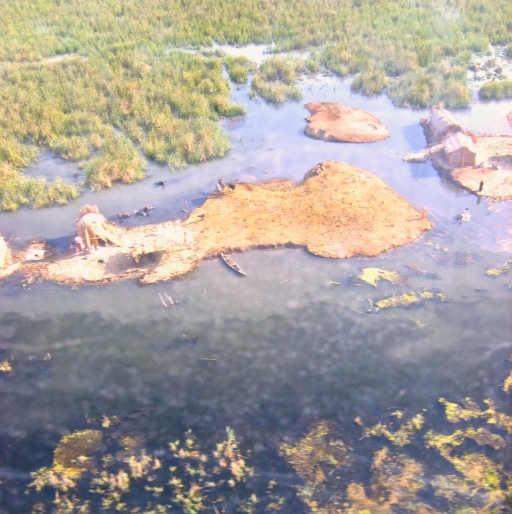General Sir Charles Townshend’s decision to stand against the Ottomans at Kut in December 1915 remains a controversial episode of the First World War. Major Paul Knight discusses his reasons in this article for Centenary News.
Kut is located on the River Tigris in Mesopotamia, now Iraq. It had been captured by General Townshend and his Anglo-Indian 6th (Poona) Division in September 1915 to secure other British objectives.
Kut stood at the eastern end of the Shatt-al-Hai canal which travelled westwards to Nasariyah on the Euphrates. Nasariyah had been the main Ottoman base on the Euphrates until recently captured by the British. Kut was also the centre of local trade and made an ideal logistics hub for any further British advance towards Baghdad.
Following the inconclusive Battle of Ctesiphon, just 15 miles (24 kms) south of Baghdad, Townshend considered his force was too weak to hold its positions and commenced a withdrawal to Kut where his force could rest and recover. He also had to evacuate his casualties back to Basra, a task which overwhelmed his limited logistical support, resulting in public outrage and a Parliamentary enquiry.
Once the Ottomans realised that Townshend was withdrawing, they followed closely but after the battle they were in no position to exploit the situation. Indeed, one morning, waking to find the Ottomans camped within sight of the British positions, Townshend halted the withdrawal and conducted successful a local counter-attack.
Exhausted
Townshend and his exhausted troops reached Kut a few days ahead of the Ottomans. He had a short window to decide what to do next. Upon this decision rested the lives not only of his men, but of those who would have to relieve him.
The decision to stand at Kut has been a controversial one ever since and it is easy to dismiss Townshend as another ‘Donkey’, but he was uniquely qualified to make the decision.
As a young officer, he had successfully commanded a garrison besieged at Chitral in 1895 on the Indian North West Frontier. On his return to the UK, ‘Chitral Charlie’ became the darling of London society. Prior to that, Townshend had served in Egypt in the 1880s and in 1898 fought at the Battle of Omdurman which avenged the death of General Gordon (1884) in the Siege of Khartoum. Townshend knew all too well the personal and professional gains and risks of becoming besieged.
Unfortunately, Townshend’s performance during the Siege of Kut was not as vigorous as in his earlier career or during his advance towards Baghdad. He had suffered from heatstroke in the summer of 1915 and been evacuated to India to recuperate. He almost certainly suffered from some form of breakdown from the pressures of command.
Risks
He had warned his superiors of the weakness of his command, and the risks he would be exposed to should it suffer any reverse. When Baghdad was captured in March 1917, Townshend was entirely justified to complain about the seven divisions available to General Frederick Maude to accomplish what he had been ordered to achieve with one.
In his memoirs, Townshend gave his reasons for halting at Kut. The main one was that his men were exhausted. They had been in Mesopotamia for over a year without leave, and throughout 1915 had fought what is probably the most successful campaign of the whole war, starting with ‘Townshend’s Regatta’ on 31 May and almost reaching Baghdad six months later.
Some of his soldiers considered that they could have continued the withdrawal after a few day’s rest, but that would have meant abandoning the stores at Kut to the enemy. They would have had to continue the march in the open with the risk of having to fight a battle against the Ottomans and/or the nominally neutral Arab tribes who had a reputation for turning against whichever army was in retreat. Finally, the next British base was a Sheikh Sa’ad, a village on the banks of the Tigris and far less defensible than Kut.
The advantage of Kut, besides being an established supply dump, was that it sat in a bend of the Tigris, making it in effect a peninsula with a narrow strip of land to be defended. The southern end was protected by a fort. Townshend would also claim that from Kut he could block Ottoman traffic on both the Tigris and Shatt-al-Hai to protect British forces along both. However, as the Ottomans were as short of river transport as Townshend had been at Ctesiphon, they ignored the river and marched past Kut.
Reinforcements
Finally, Townshend was promised that reinforcements were on their way. Eventually, the Anglo-Indian 3rd (Lahore) and 7th (Meerut) Divisions would arrive from France, and the British 13th (Western) Division would arrive from Egypt having been re-quipped following Gallipoli.
Amongst 13 Division’s young officers were Bill Slim, later of Burma and 14th Army fame in the Second World War, and Clement Attlee, Britain’s post-war Labour Prime Minister. For now, they were anonymous subalterns with a very short life expectancy. All Townshend would have to do was dig in and wait.
In December 1915, a new commander arrived in Basra to conduct the Relief, Lieutenant-General Fenton Aylmer, VC, late Royal Engineers. Aylmer had won his Victoria Cross during the 1891 Hunza-Naga Campaign on the North West Frontier, a campaign which Townshend also participated in and was decorated. It was also Aylmer who led the Relief of Chitral to save Townshend two years later. Townshend no doubt had grounds for confidence that the Siege of Kut would be short.
Major Paul Knight PhD VR is author of ‘The British Army in Mesopotamia 1914-1918’
© Centenary News & Author
